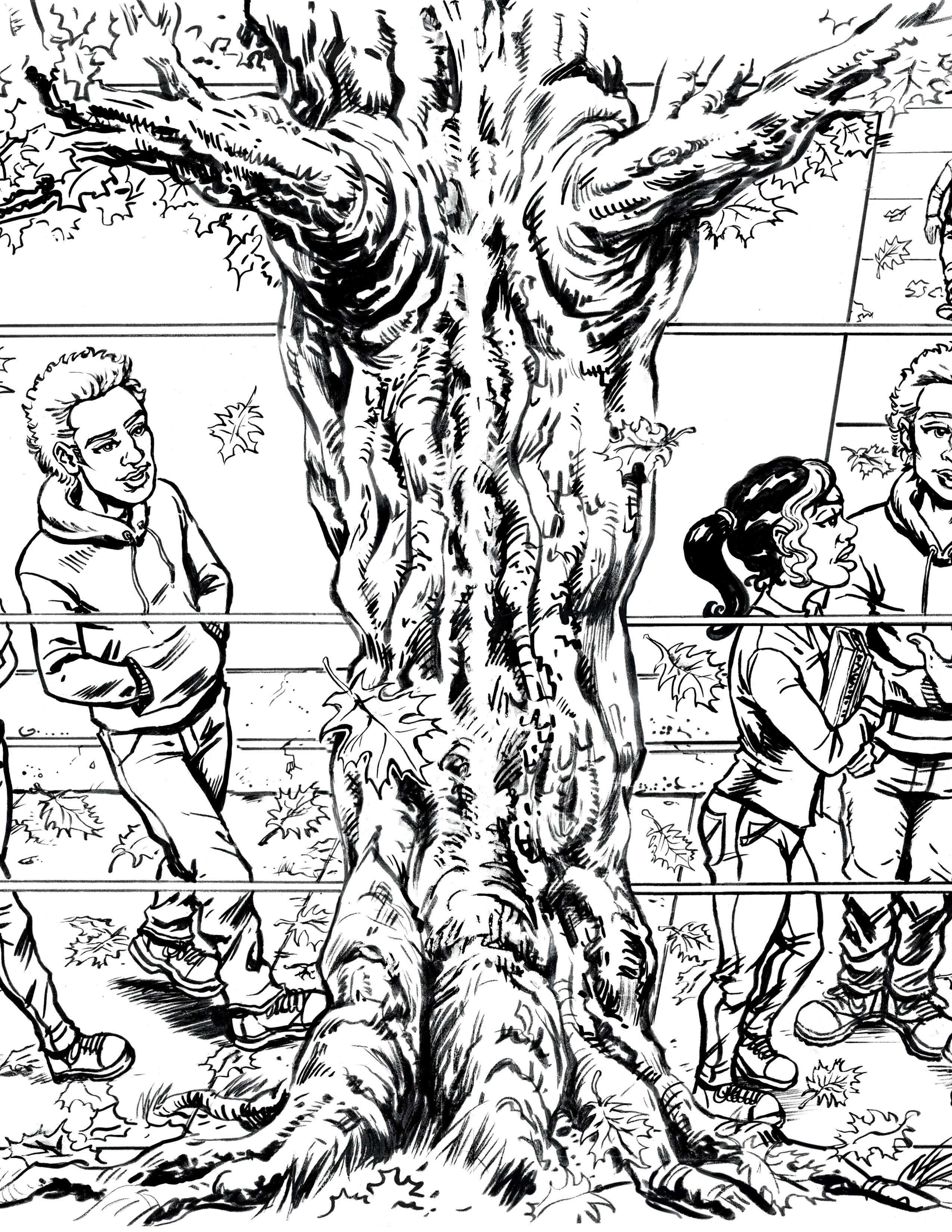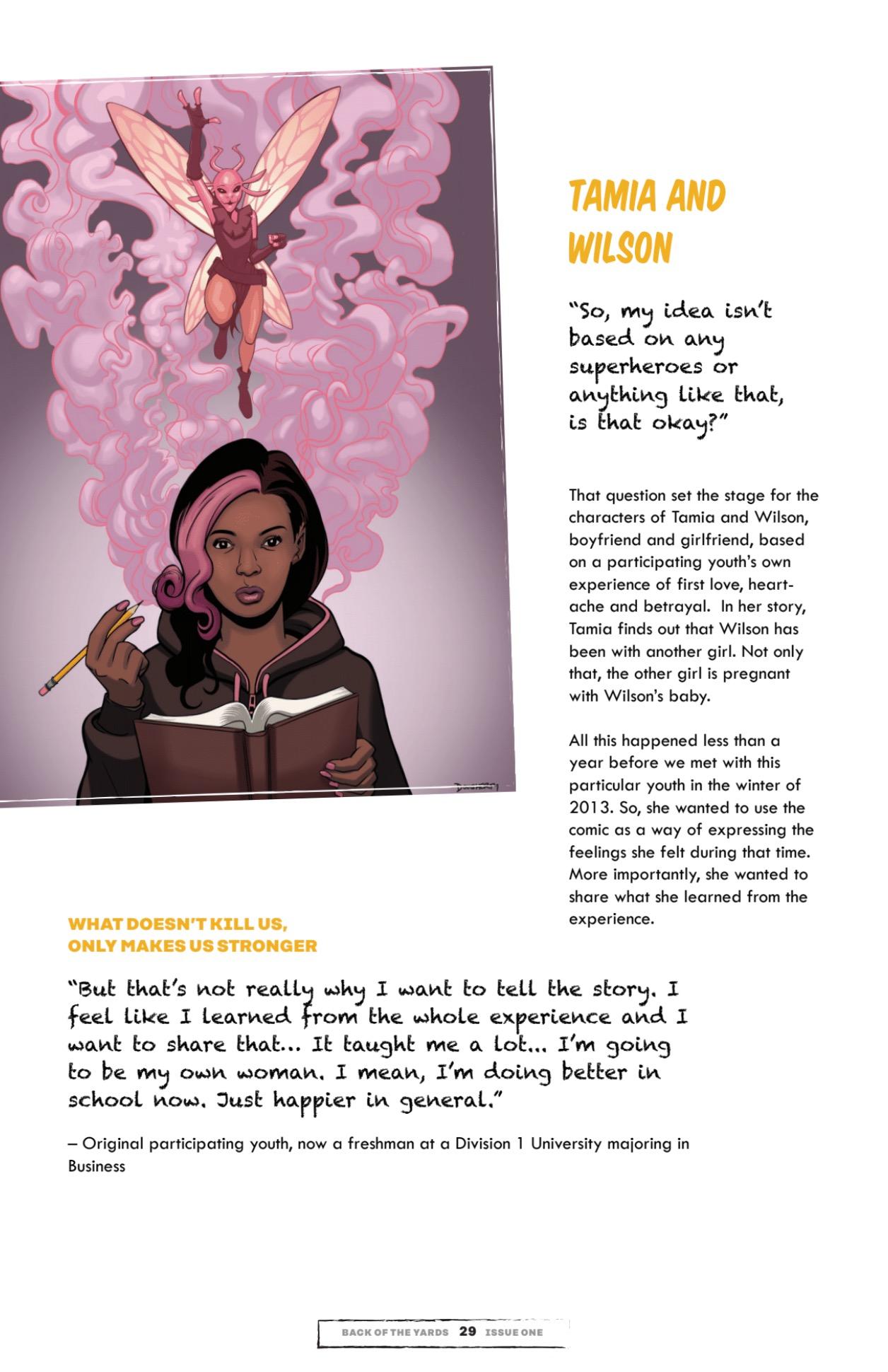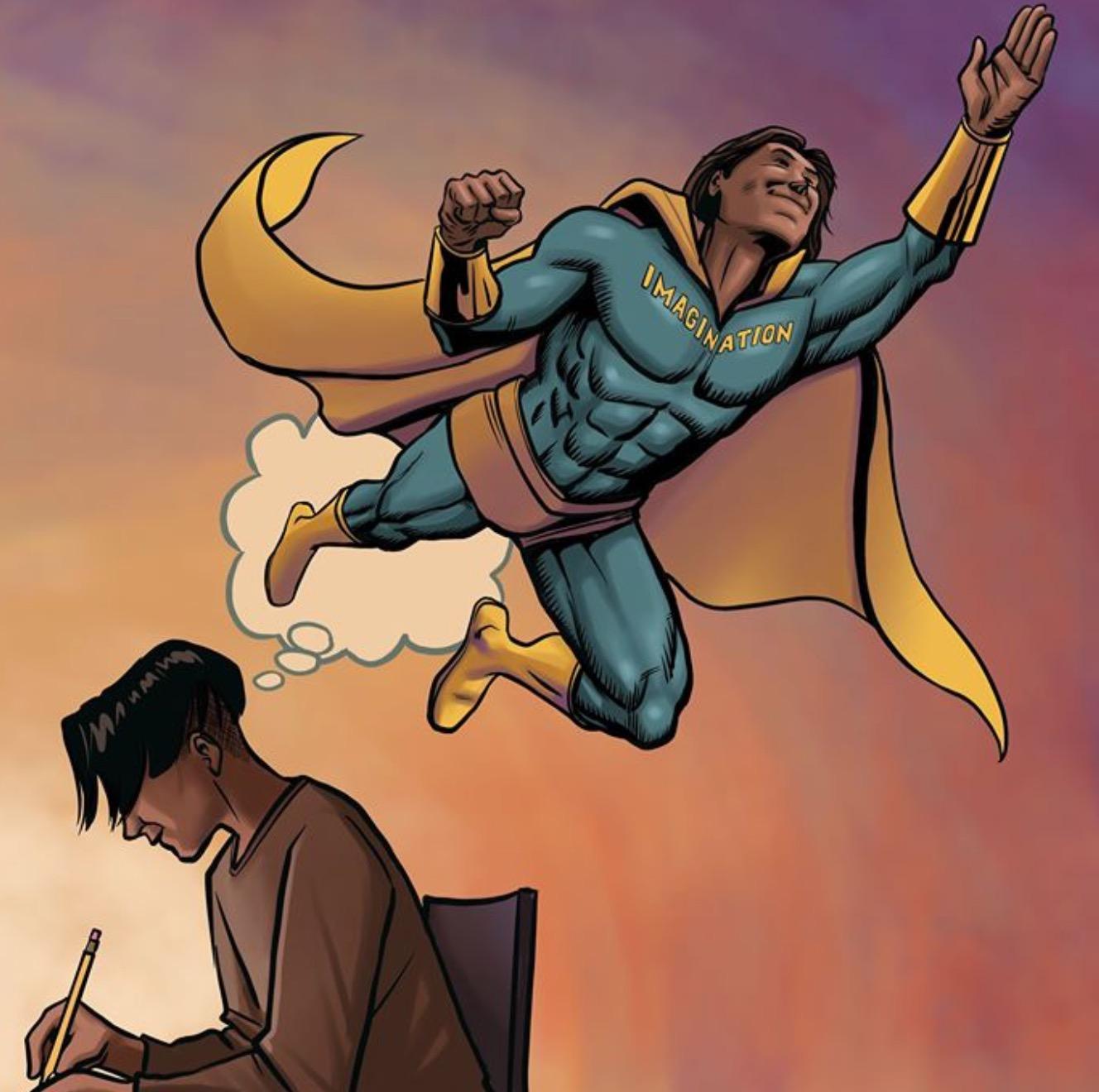
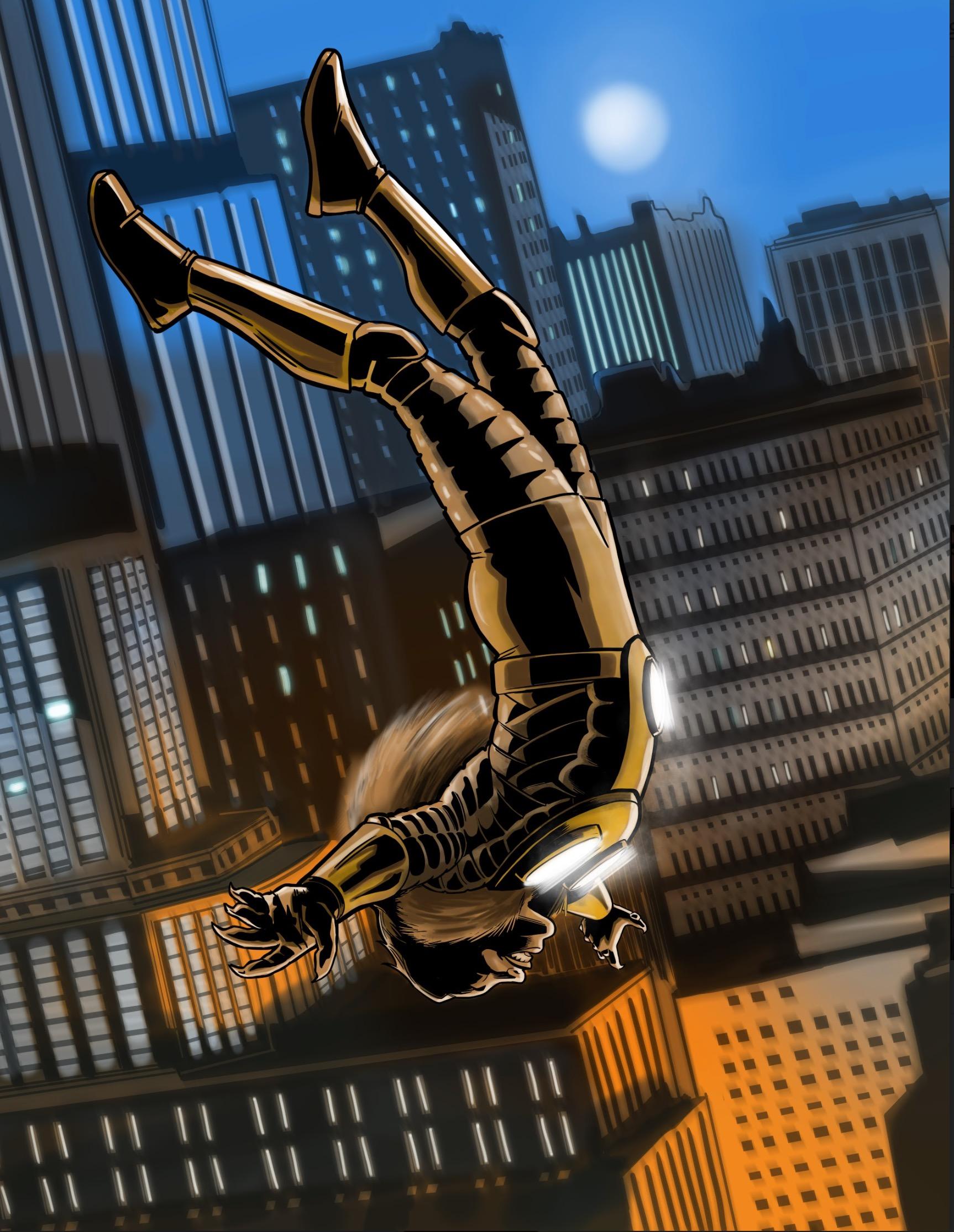
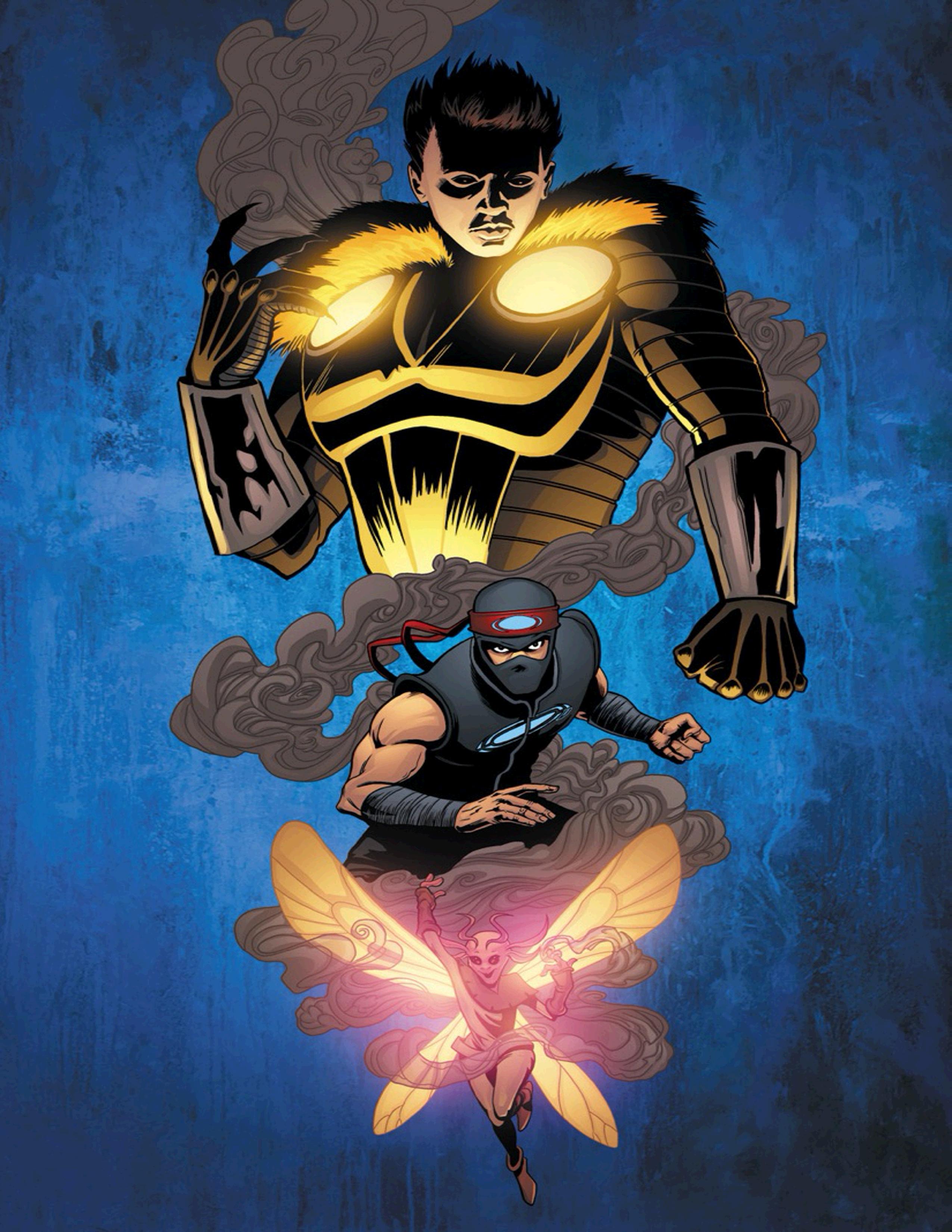





See that guy on the left? I guess that’s me, Jimmy, some time just before this project started, as illustrated by participating artist John Golden. Looks like I may be deep in thought. About what, you ask? Who the hell knows. I could be contemplating just how incredible it is that each one of the individuals on this bus, all with our own unique ancestral journeys through the ages, somehow find ourselves sharing this brief and fleeting moment in time with one another, against all conceivable odds…

Or alternatively, I could be wondering why my adopted hometown basketball team, the Chicago Bulls, don’t run more motion offense to free up their perimeter shooters and give Derrick Rose more space to drive towards the basket (circa 2012).
Both thoughts every bit as likely to be occupying space in my mind at any given moment, to be sure. And that’s me in a nutshell. My mind is a complete mess. And unfortunately, I spend a lot of time there.


Back then, taking those bus rides home in Chicago, I was consumed by my job as a corporate attorney. And not because I loved my job. Rather, it was because my company at the time had been involved in a series of corporate acquisitions and divestitures for a stretch of years. As a result, I think I was just desperately looking for some sort of work-life balance in general, which resulted in even more daydreaming than usual.
And of course, during that time and beyond, Chicago’s crime rate, corruption and budget woes would often be the subject of national headlines. There was just a lot of negative energy in the air. I guess that also occupied some space in my mind periodically on those many bus rides home.
Even as I would think about it back then, I didn’t view these problems as necessarily unique to Chicago. These are shared problems among many of our increasingly complicated urban centers. They are issues that went beyond nice and easy political soundbites, and issues that couldn’t be addressed by any one particular solution or dogma. And I guess in that context, I would often wonder what someone like me, a guy with absolutely no particularly noteworthy skill whatsoever, could even do to help?


It was this line of introspection that would often lead me to think more and more about my rather ordinary life. Although I may not have been exactly passionate about my work at the time, nor have accomplished anything of particular note, I was nonetheless self-aware enough to know that I was damn lucky. Particularly when I would look back and think about my own childhood.
Purely as a statistic, my odds for any kind of success out of the gate probably weren’t great. My dad was an absent and volatile figure who would end up ultimately losing his soul to drugs and mental illness. And as a kid, I grew up in a neighborhood fairly similar to some of the neighborhoods that generated many of the headlines in Chicago.
But that’s where my journey along any statistical probability path abruptly ends because the lucky part for me is that I had a loving mom, grandparents and godparents who were determined to help make my life a little easier than perhaps their own. Thus, eventually, I would find myself experiencing an entirely different set of life circumstances.

Nonetheless, it’s also in that context that I could remember what it felt like as a young kid to be shaped in large part by the external expectations of my old neighborhood and early circumstance, particularly when those external
expectations were largely negative.

And, conversely, I also knew what it meant for me personally when I became exposed to others that helped me think a bit more creatively later in my adolescent life. They helped to expand my own internal set of expectations.

I saw firsthand how being exposed to others’ ideas and creative thoughts can be incredibly empowering. It’s those little external sparks that allow you to begin to envision a world that transcends your own reality, whatever that reality may be; and that’s when new possibilities can truly begin to emerge from within.

And that’s when it would eventually hit me on one of those many bus rides home. Why not try to develop some sort of youth outreach initiative that could help to facilitate those little creative sparks, however modest? I’d always felt that creativity was very much undervalued. Even in the corporate world that I was immersed (trapped) in, where being able to think a little outside of the box could quite literally lead to big dividends. And I was even more convinced that creativity was essential in fields like public service and science.
And the irony of all of this, of course, is that programs promoting creativity within our urban centers always seem to be the first in line when it came to budget cuts. So, as I would continue to think about it over those many bus rides home, there just had to be an opportunity to do something .
Perhaps more than anything, beyond youth empowerment, budget cuts and Chicago’s headlines, I thought doing something that facilitated creativity could be fun. Maybe I could light a few much-needed creative sparks of my own. And as my mind would wander on those many bus rides home, whether contemplating the serendipity of life or the starting lineup for the Chicago Bulls, it became more and more apparent that I just needed a little more fun in my life.
Armed with this motivation on one of those many bus rides home in the winter of 2012, I finally decided I was going to give it a go. I didn’t have a specific plan in mind other than to recruit some local artists to collaborate with urban youth the following summer. I figured we could just see what came out of that collaborative process, and then take it from there.
Little did I know, as I walked off the bus that fateful winter’s evening with this very basic premise in mind, the origin story for this little comic-based collaborative project had just begun. ****




Welcome to the Made Collaborative Studio! These project manual files have been developed to help guide you through this Virtual Studio experience, which was created to help provide participating youth an opportunity to collaborate with us (virtually) on the development and production of our ongoing comic series, the Back of the Yards. Moreover, it is our hope that these same tools and concepts may also help participating youth to spark their own creative ideas and/or develop their own creative projects.
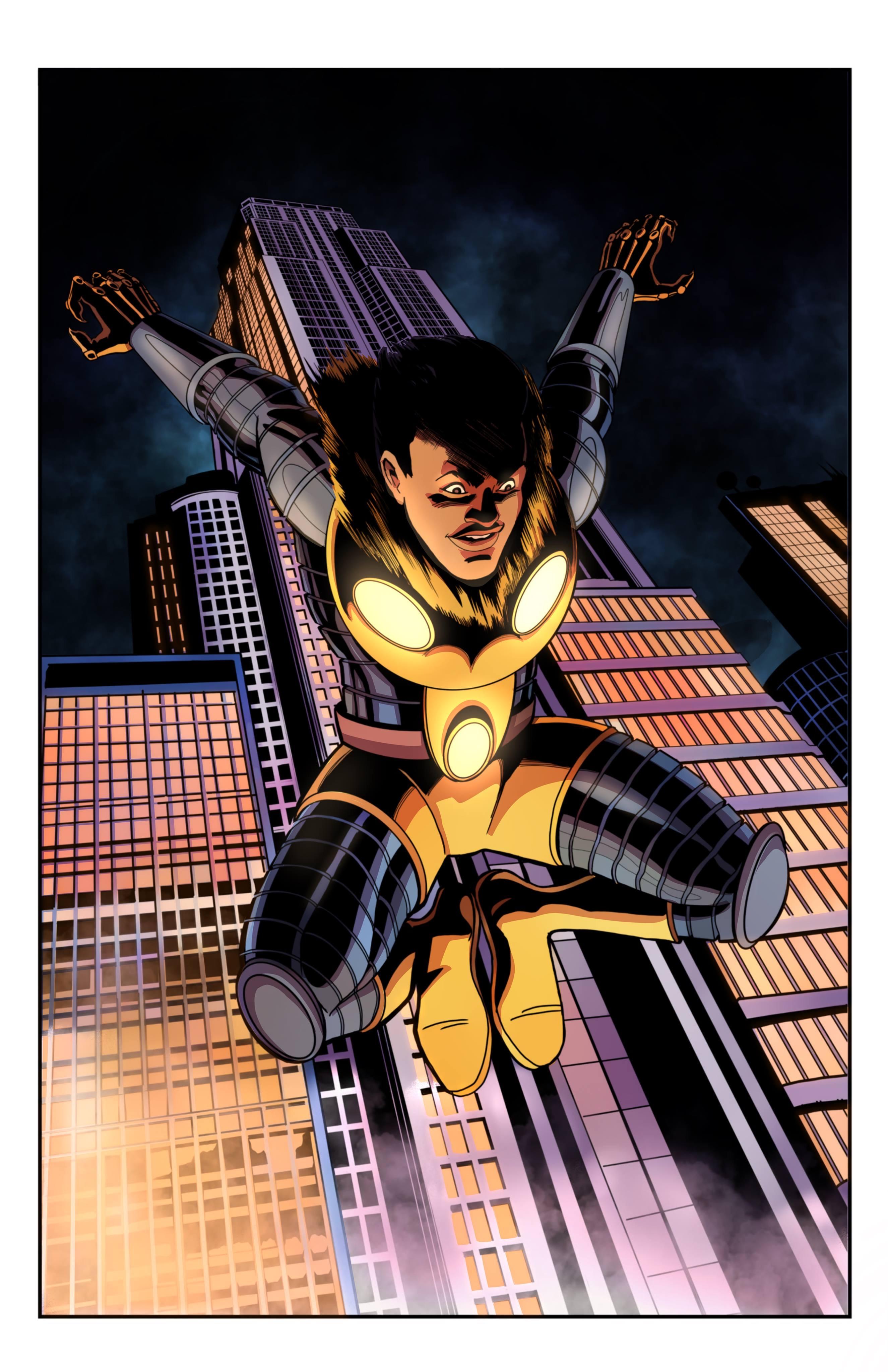

Within these project files, we will try to provide you with an overview of the virtual studio platform to help prepare you for your own collaborations, including (i) an overview of the Made Collaborative Three-Card content system and (ii) the corresponding digital tools that we will use to help facilitate collaborations with you.



Before we get into some of the details regarding this virtual studio platform including the Three Card System and corresponding virtual studio digital tools, we thought we’d provide a little background because, as with all collaborations, context matters. That said , if you have read Issue #2 of the Back of the Yards Comic, or any of our existing Studio Cards, you may already have this background context and in that case, absolutely feel free to skip ahead to Part 1. Otherwise, let’s go back a little to …



As described further in Studio Card #1, it was right around the fall and winter seasons of 2013, the project’s founder Jimmy Briseno, started meeting with youth at an after-school program in the West Side of Chicago and asked them if they were interested in making a comic based on their own original ideas.
And, also as further described in Studio Card #1, the project itself didn’t start out as a comic, but rather, began as a very modest community project intended to connect artists with youth to collaborate to promote creative thought. That simple premise then evolved into a comic project based on the interests of those initial youth.
As Jimmy met the youth, along with his original collaborator, an artist named Manny Dominguez, it became quickly apparent that the youth gravitated towards comic-style illustrations, characters, and storylines. From there, Manny and Jimmy began working with the youth to develop characters and storylines based on their creative input and ideas.


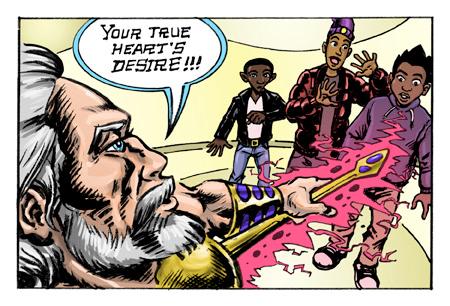






Which was all great except for one minor detail: neither Jimmy (a below-average attorney by day) nor Manny (an illustrator and web designer by day, but not a comic publisher) had ever developed a full comic before. Not to be deterred, Jimmy then began to recruit and retain other artists and writers to help make this new collaborative comic project a reality.
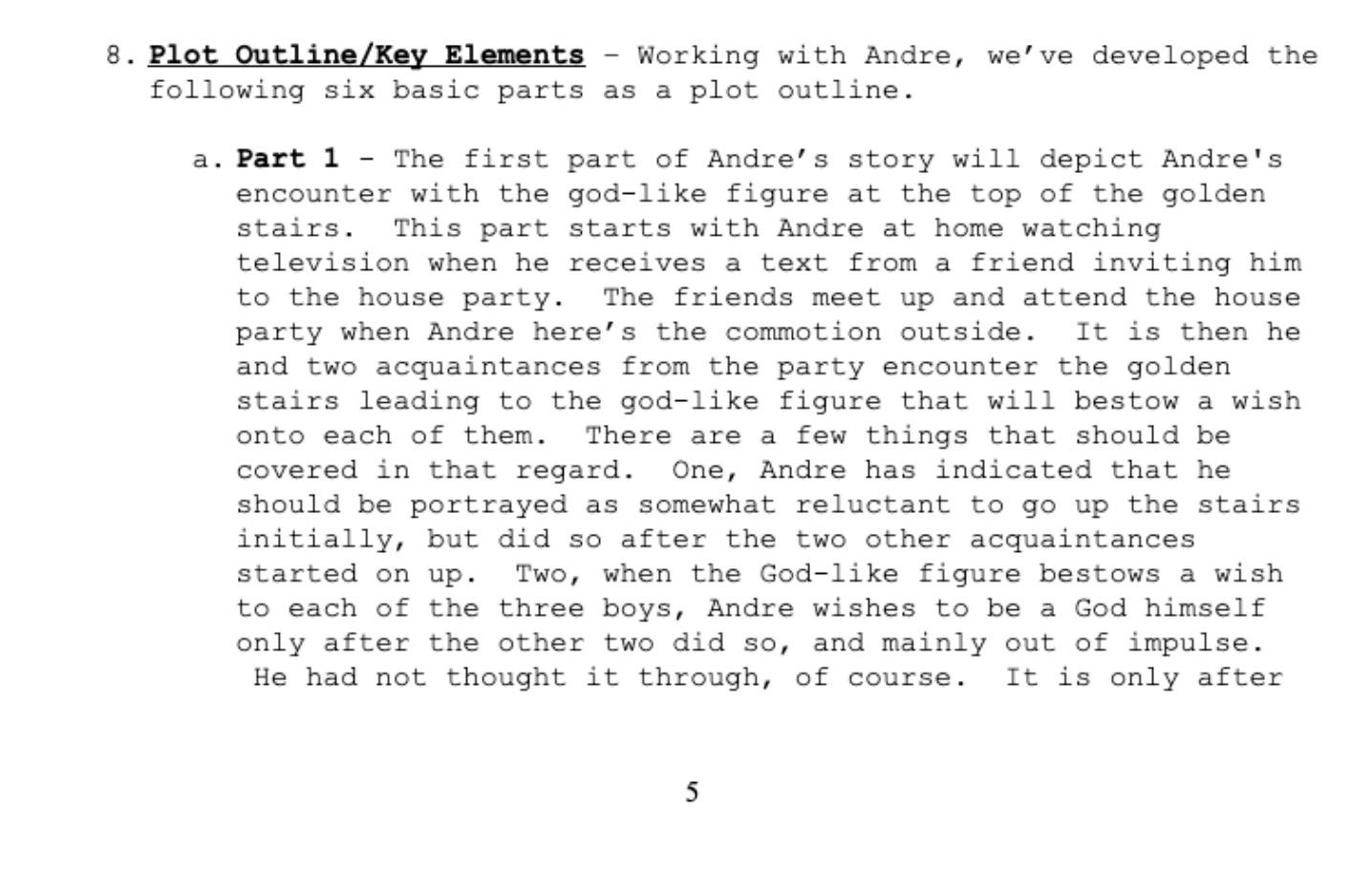
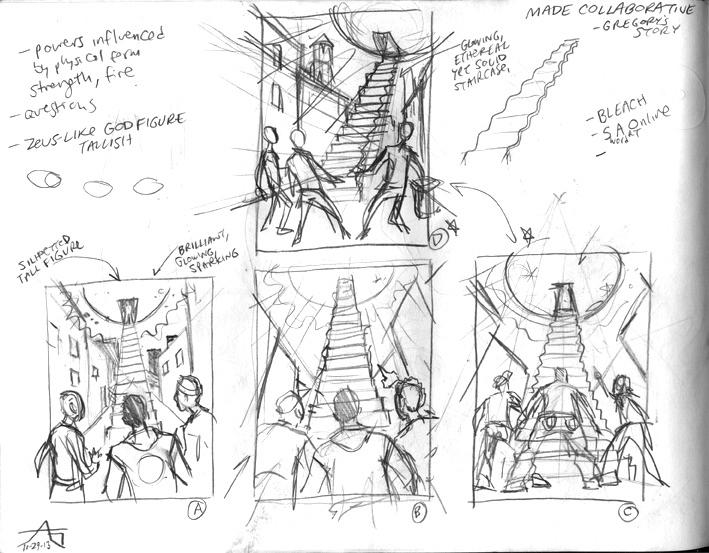




That reality took much longer than initially planned as day jobs, money, and other life challenges were encountered along the way. But the artists kept pushing forward and eventually what started out as a very simple idea in a classroom in the West Side of Chicago evolved into our first comic series: The BackoftheYards .

And as we came closer to completing the second issue of this new comic series, our plan was to re-engage with a few afterschool programs in Chicago to collaboratively develop Issue #3 of the comic series. And this time we wanted to incorporate elements from Carl Jung’s character archetypes and Joseph Campbell’s Hero’s Journey as part of those planned collaborations. But it was at that time that seemingly out of nowhere, COVID hit the world.





To say COVID changed everything for us would be an understatement. Of course, COVID’s impact on this modest little comic project is obviously trivial compared to what has been experienced by so many throughout the world. But, in any case, any plans we had of reengaging youth in classrooms and afterschool programs were also completely derailed because of COVID’s impact starting in 2020.
The truth is, even before COVID, we struggled with many aspects of the longerterm project plan. Sure, we felt good about the basic premise of using this comic platform as a way of promoting creative thought for participating youth, and further enhancing this collaborative model by incorporating elements from Joseph Campbell’s Hero’s Journey as well as Carl Jung’s character archetypes. But at its core, we knew how challenging the in-person collaborative model can be.
In-person collaborations take time and require a high degree of coordination. Not to mention a certain degree of commitment from participating youth who are deluged with other activities and interests competing for their attention daily, many virtually. As well as competing interests for afterschool staff and us as project administrators and artists in the form of our day jobs, family commitments and adulting in general.
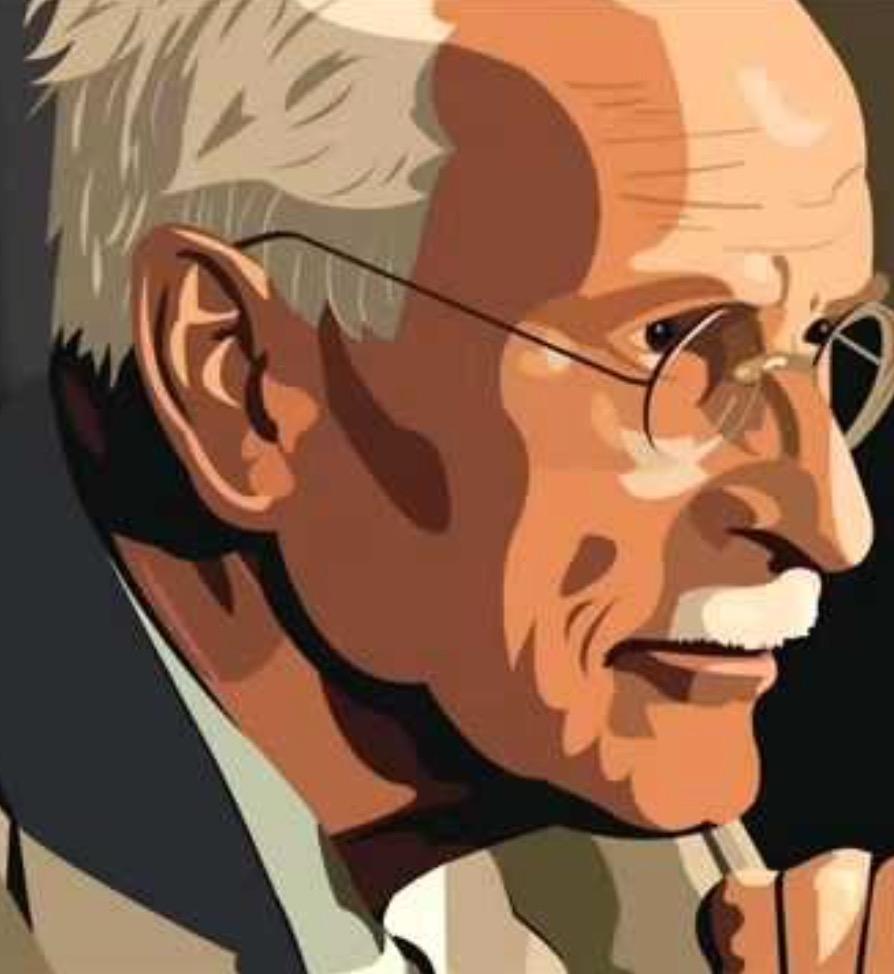
Introducing the Made Collaborative Studio

All these constraints called to question the long-term viability of a project like this, COVID or no COVID. Moreover, even if we proved successful in executing this in-person classroom model now in the form of additional afterschool collaborations and comic issues, how could we realistically scale

combining content and established story telling concepts along with common digital third-party applications like Google Slides, Forms and Wordpress, to provide unique collaborative opportunities directly accessible to after-school programs and youth at no cost, and without the need for timeconsuming in-person workshops and coordination.
So, with that, the rest of these project files will present to you all the basic elements of the Made Collaborative virtual studio platform and how you can collaborate with us. And as you will see, it’s all pretty basic stuff, but if you’d like to participate and learn more, just turn the page!
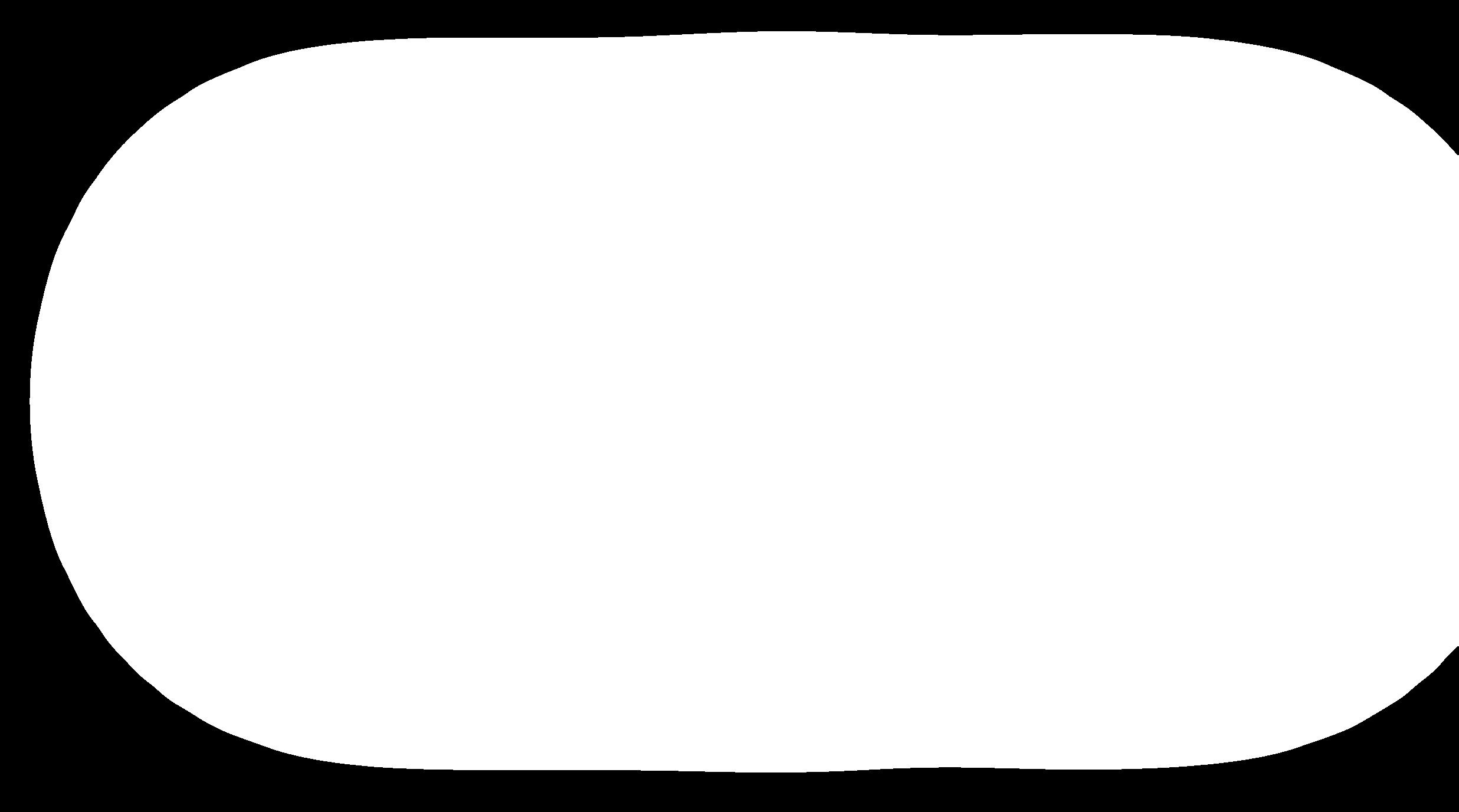



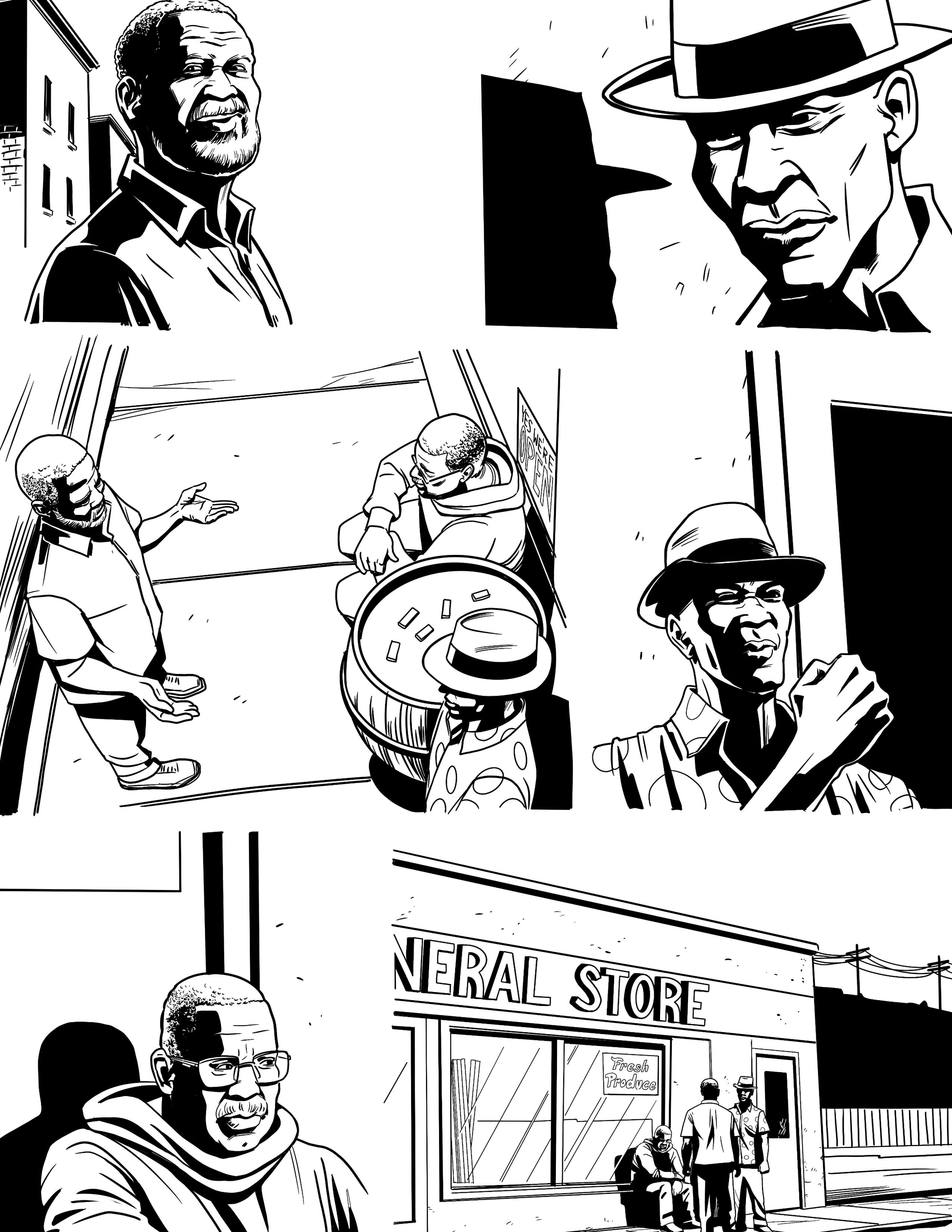

Any meaningful collaboration requires content and information at the start, and at the heart of this virtual studio platform is a basic ThreeCard content system, which is a framework we developed to share information related to our comic collaborations.

As we all know, in order to truly prepare for any task properly, information is necessary. At school, you need information to prepare for a quiz. At work, you may need information to help develop a report or strategic plan. Even in sports, you may need information about your opponent to help develop a strategy.
In basketball, for example it’s helpful to know whether the player your guarding likes to drive left towards the basket, and if so, you may want to force him or her to go to their right. That knowledge of your opponent is useful information. That information is power.
Similarly, the information provided here via this Three-Card system is designed to help you more strategically think of ideas for your own collaborations, whether on the Back of the Yards, or your own creative projects. And the goal of our ThreeCard system is simply to provide you that useful information in a structured and fun way.
To help structure project information so that it may be more useful and intuitive to collaborators, we have created three types of cards, (a) Studio Cards, (b) Character Cards and (c) Actions Cards. And on the back side of each of these three card types we will provide: (a) provide a basic summary of information relating to the card’s particular subject matter and (b) a QR code that links to more related subject matter information digitally (presented in the form of “hyperdocs” on the http://madecollaborative.com website). In this way each card type has the same basic application, with the only difference between the three card types is the type of information that is being conveyed, as further described below, starting with the Studio Card.
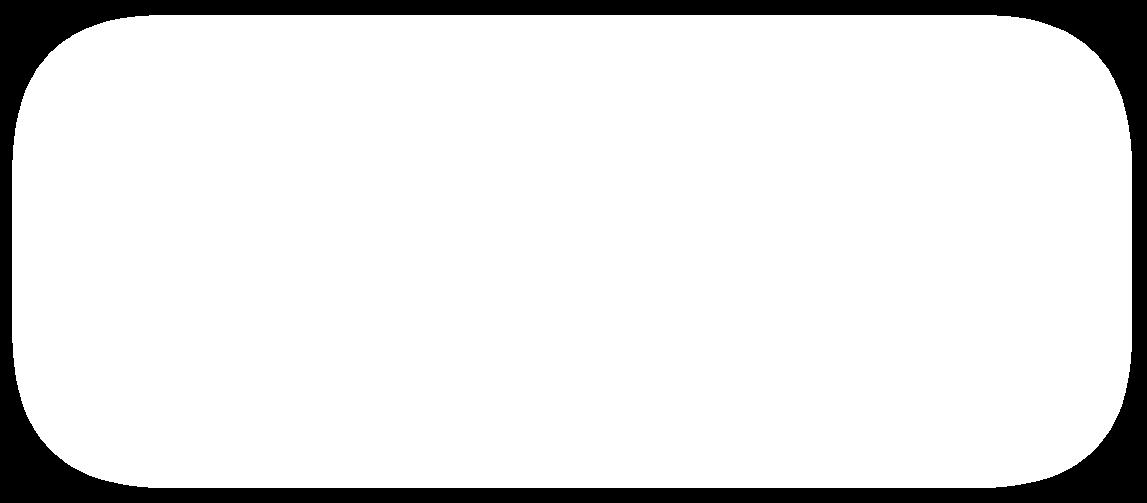

Studio Cards will broadly provide foundational context information regarding some place, event, setting, or concept that may be helpful to other for our comic collaborations, or their own independent creative collaborations.

Character Cards serve the same function as the Studio Cards in that they provide contextual information, but instead of a place, event, setting, or concept, CharacterCardsprovidecontextualinformationonaperson or other living thing, whetherfictionalornon-fictional .

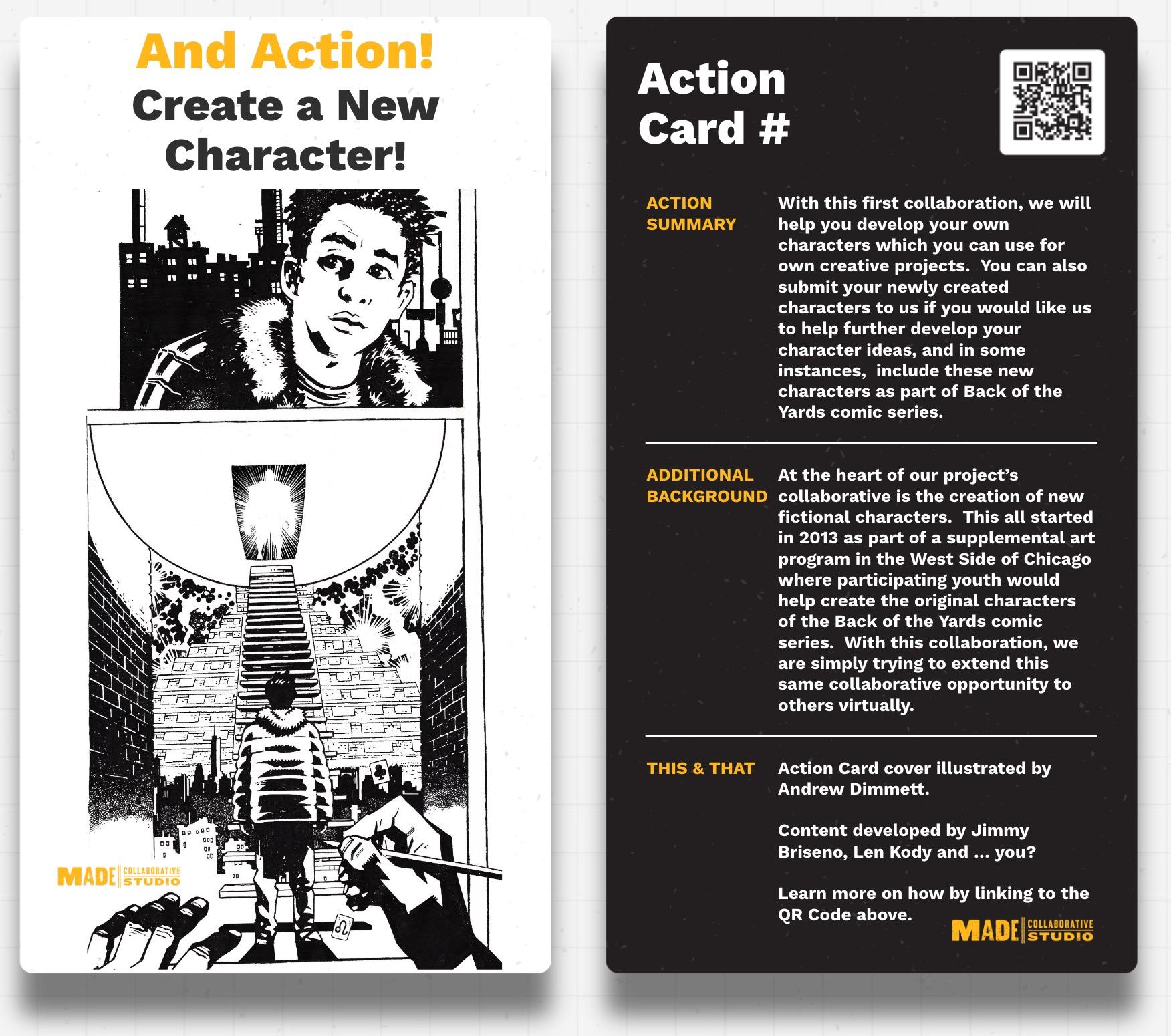
Finally, at the very heart of our collaborations, Action Cards will invite/prompt action in the form of collaborations, applying the contextual information covered by Studio Cards and Character Cards.
For example, with Action Card # [___], we will provide youth an opportunity to create their own new characters to be included in future issues of the Back of the Yards comic series, using some of the character archetype concepts presented in Studio Card #2. We will cover more on Action Cards in Part 4 of this handbook.
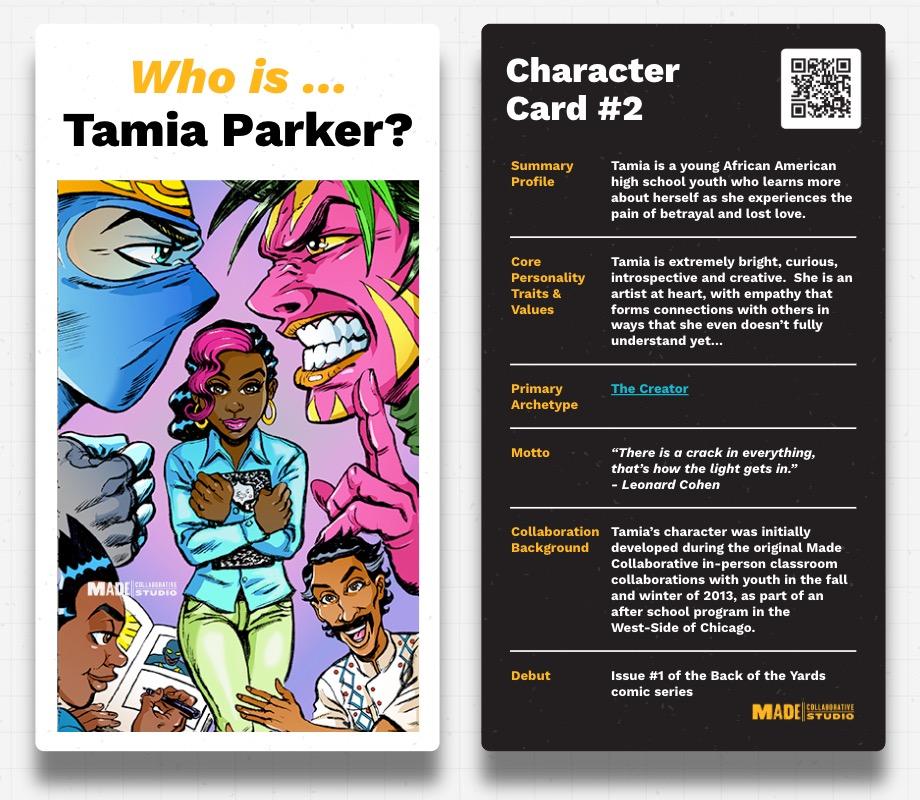
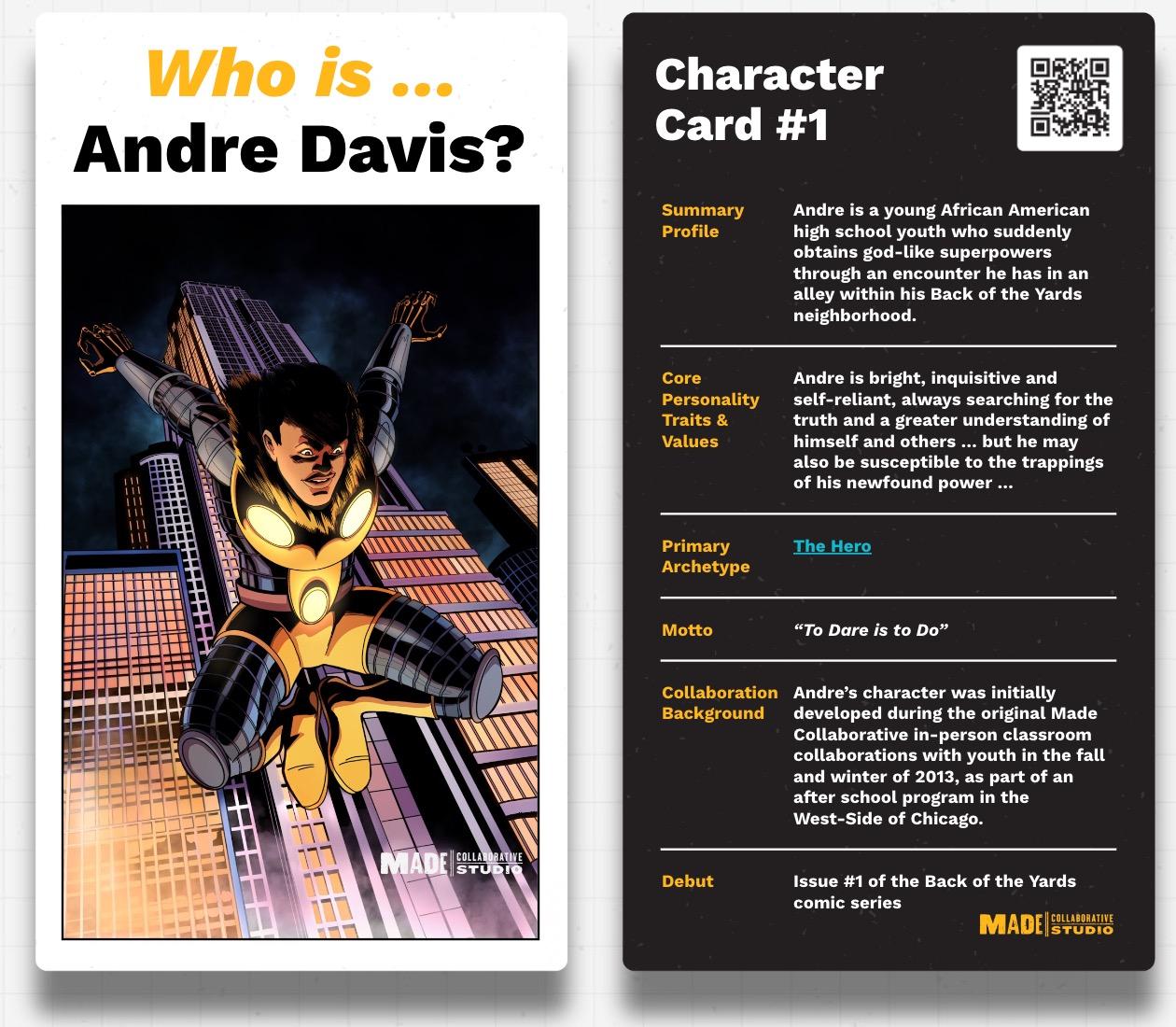
Having generally described what type of information is shared by each card type (Studio Cards, Character Cards, and Action Cards), we can now move to how this all works in the virtual realm using our project website, google enterprise applications (Google Slides, Good Docs and Google Forms) and last but certainly not least, Issuu.
At the core of this virtual studio platform is our project website, https://madecollaborative.com It is here that you will find access to most project content and access to other related digital tools collaborative opportunities. Each Studio, Character and Action Card contains a QR Code on the back side of the card, and that QR Code will lead to a corresponding landing page on the project website.
And from those website landing pages, you will see content related to each particular card’s subject matter (presented in the form of an interactive Google Slide) and a related featured collaboration (in the form of an interactive Google Form). Finally, in the case of Action Cards, you will be provided access to a corresponding project board (using the third-party Miro virtual platform), all of which will be covered in more detail within these project manual files.
As part of this new virtual studio platform, we use Google applications extensively. We use Google Slides to present interactive content relating to each of our Studio, Character and Action Cards. And, at the very heart of our virtual collaborative model, we use Google Forms to facilitate the submission of collaborative input from youth and other participants. And we will often refer to each of these digital tools interchangeably as “Hyperdocs”.

Just a couple more things to note regarding the digital tools before we take a closer look at Studio Cards, Character Cards and Action Cards. First, because one of our goals is to utilize existing third-party applications in a way that fosters creative thought and collaboration for youth, we will always be exploring other applications as potential tools for this project in the future. As an example, we are currently assessing a collaborative whiteboard application called Miro (www.miro.com) for a beta rollout later in 2023 as part of our Issue 4 comic collaboration.
Lastly, now that you have a general overview of our Three-Card content system and related digital tools, we can take a closer look at how these digital tools are utilized for each card type (with only minor variations between the three card types), beginning with Studio Cards in Part 2 …



